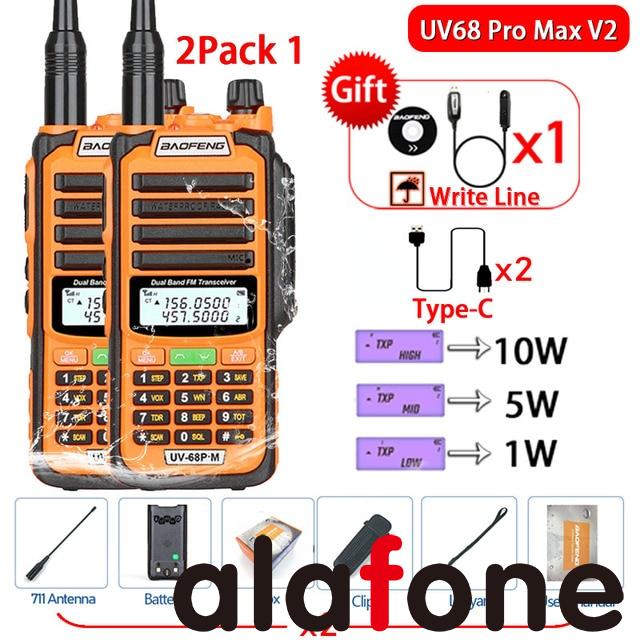UHF (Ultra High Frequency) and VHF (Very High Frequency) are two different frequency bands used in two-way radios, and they have distinct characteristics that make them suitable for different applications. Here are the key differences between UHF and VHF two-way radios:
UHF (Ultra High Frequency):
- Frequency Range:
- UHF radios operate in the frequency range of 400 MHz to 512 MHz (some models go up to 900 MHz). The higher frequencies allow for shorter wavelengths.
- Propagation:
- UHF signals have shorter wavelengths, which means they are better at penetrating obstacles like buildings, trees, and walls. This makes UHF radios more suitable for indoor use and urban environments.
- Interference:
- UHF signals are less prone to interference from other electronic devices. This makes UHF radios a good choice in areas with a lot of electronic equipment or in situations where there might be interference from other radio signals.
- Range:
- UHF radios typically have a shorter range compared to VHF radios when used in open spaces. However, they may perform better in environments with obstacles.
- Common Applications:
- UHF radios are commonly used in urban areas, indoor environments, construction sites, warehouses, and situations where obstacles may affect signal propagation.
VHF (Very High Frequency):
- Frequency Range:
- VHF radios operate in the frequency range of 136 MHz to 174 MHz. The lower frequencies result in longer wavelengths.
- Propagation:
- VHF signals have longer wavelengths, which allows them to travel longer distances in open spaces. However, they are more affected by obstacles, making them less suitable for indoor use.
- Interference:
- VHF signals may be more susceptible to interference from electronic devices, especially in urban environments. However, in open spaces, VHF radios can provide clear communication.
- Range:
- VHF radios often have a longer range in open areas or rural settings compared to UHF radios. This makes them suitable for outdoor activities like hiking, camping, and agriculture.
- Common Applications:
- VHF radios are commonly used in outdoor and rural settings, such as agriculture, forestry, search and rescue, and marine communication.
Considerations:
- Obstacles vs. Open Spaces:
- Choose UHF for better performance in urban and indoor environments with obstacles.
- Choose VHF for better range in open spaces and outdoor settings.
- Interference:
- UHF is less susceptible to interference from electronic devices.
- VHF may experience more interference in urban areas but can offer clear communication in open spaces.
- Licensing:
- Licensing requirements for UHF and VHF radios can vary by region. Check with local regulatory authorities for licensing information.
In summary, the choice between UHF and VHF two-way radios depends on the specific requirements of the application and the environmental conditions in which they will be used. Each frequency band has its advantages and limitations, so understanding these differences is crucial for selecting the most suitable option.

